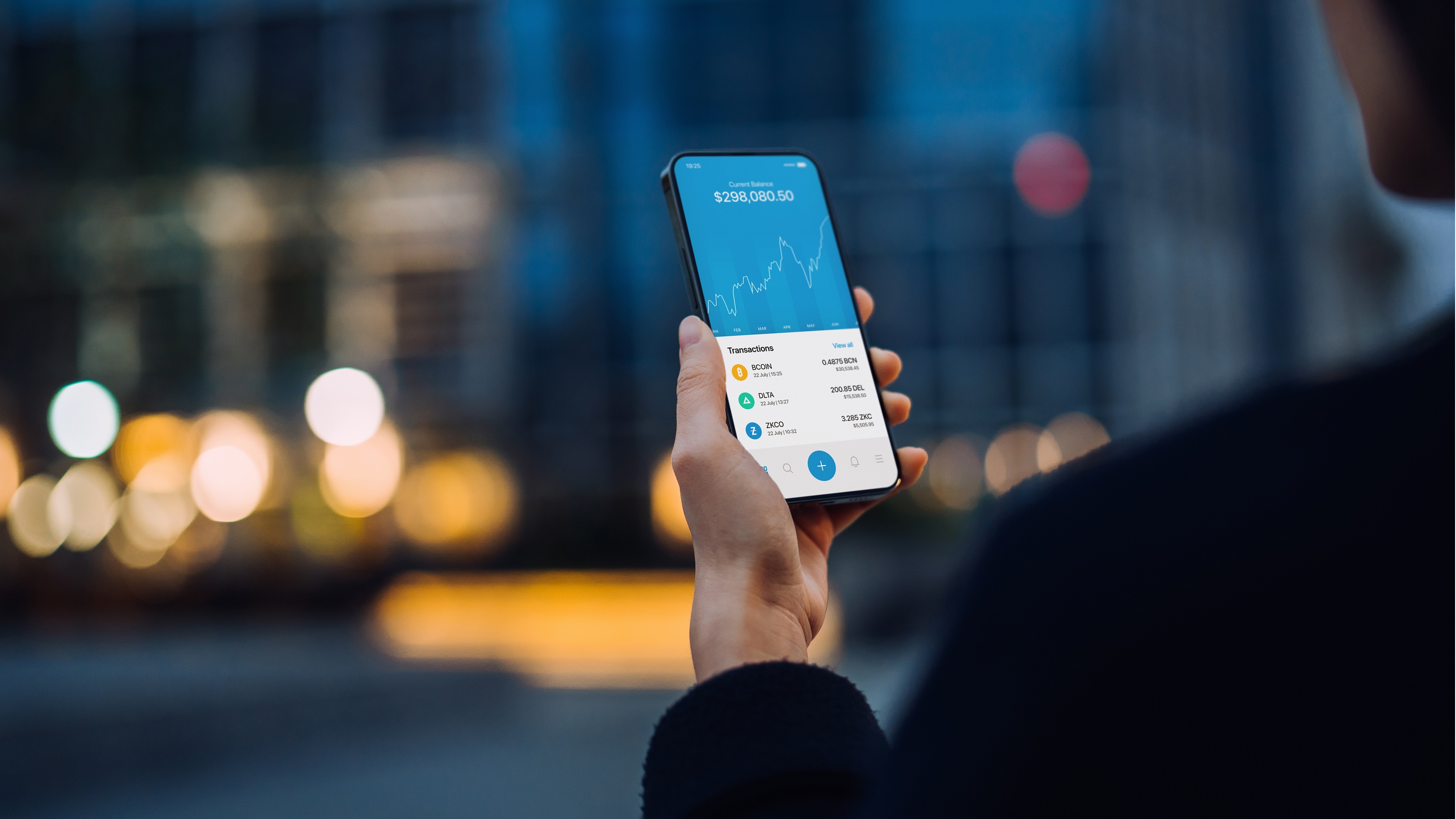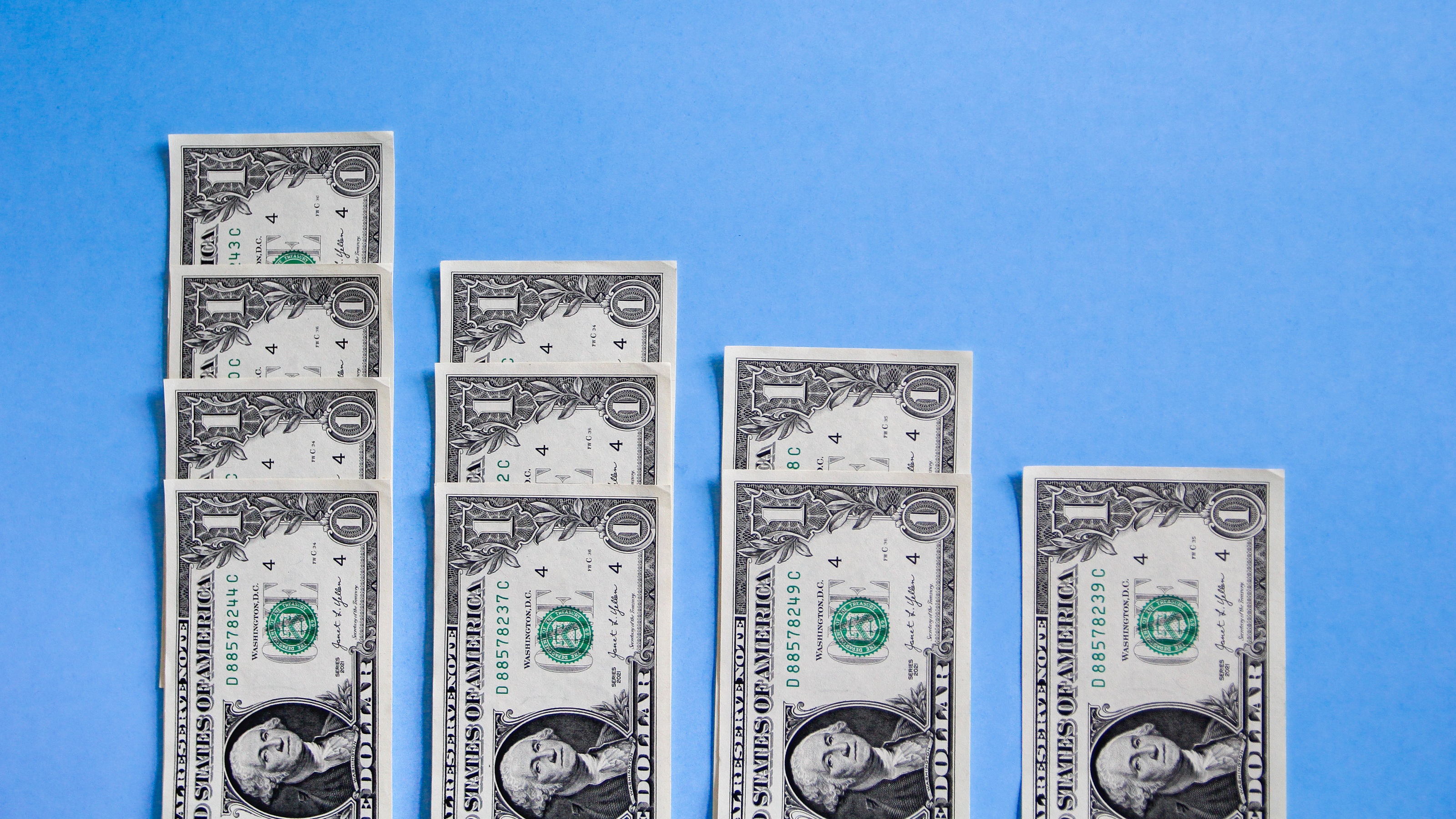37 Ways to Invest for High Yields While We Wait for the Fed to Move
Kiplinger found enticing yields in nine categories, ranging from 3% to 12%, depending on risk.

It almost feels as though we’re all Fed watchers now. From March 2022 to July 2023, the Federal Reserve Board hoisted the federal funds rate (the rate banks charge each other for overnight loans) by 5.25 percentage points in a bid to crush inflation. The inflation rate is down considerably but still a bit sticky, staying around 3%, and the economy continues to power ahead. Yet the Fed has signaled that it expects to cut rates in 2024 — it just hasn’t said when it will embark on its rate-cutting cycle. So now we’re waiting.
While we wait, some enticing yields are on offer across a wide range of asset classes for income-hungry investors — and, for a change, that includes bonds, a core income-producing asset. “One overarching theme is that fixed income is kind of back to normal, which means back to a world we haven’t seen in 15 years,” says Simeon Hyman, global investment strategist at ProShares.
A case in point: You can now earn a real yield (that is, the yield after inflation) of about 2% on ostensibly risk-free Treasuries and other high-quality bonds — and much more in riskier high-yield bonds. Stocks and energy-infrastructure securities provide both income and a growing stream of dividends, a quality that is especially important in providing protection against consumer prices mercilessly on the rise. Even-higher yields are available from closed-end funds and business development companies.
From just $107.88 $24.99 for Kiplinger Personal Finance
Become a smarter, better informed investor. Subscribe from just $107.88 $24.99, plus get up to 4 Special Issues

Sign up for Kiplinger’s Free Newsletters
Profit and prosper with the best of expert advice on investing, taxes, retirement, personal finance and more - straight to your e-mail.
Profit and prosper with the best of expert advice - straight to your e-mail.
This guide will help you identify attractive income-producing investments in nine different categories, ranging from low-risk, plain-vanilla securities to more-complex, higher-risk and potentially higher-return investments. (Although yields and risk usually move higher in lockstep, that’s not the case this year, and we’ve listed investments roughly in the order of ascending risk.)
Before you embark on your quest for income, keep a few considerations in mind. You should have a financial plan in place that specifies long-term portfolio allocations. Everyone’s financial situation is different, but generally you should ensure that you keep sufficient cash and equivalents on hand to cover six months of living expenses before investing in high-risk/high-return assets. Prices, yields and other data are as of the end of the first quarter of 2024.
5%: Short-Term Accounts
Yields on short-term, fixed-income accounts and securities follow movements in the Fed’s short-term interest rates. That means relatively attractive yields are available on cash and other short-term, liquid assets in today’s higher-interest regime.
The risks: The game will change when the Fed starts cutting rates later this year, which is widely expected. “Money market rates could go down tomorrow if rates decline,” says Lew Altfest, chief investment officer of Altfest Personal Wealth Management. Andy Kapyrin, a partner at Corient, says, “Investors are overeager to stay in cash and thus risk missing an opportunity if the Fed cuts rates.”
How to invest: Kapyrin recommends deploying some of the cash into one- to five-year bonds, which would lock in today’s yields for a longer period than, say, the overnight rates on money market funds. Of course, because this category is mostly cash equivalents likely earmarked for emergency reserves or to meet short-term liabilities, you want to play it safe.
One exchange-traded fund Kapyrin cites is Vanguard Short-Term Treasury (VGSH, $58, yield 4.7%), which invests in one- to three-year government paper and has a duration — a measure of interest-rate sensitivity — of 1.9. That means if rates were to rise (or fall) one percentage point, the fund would lose (or gain) roughly 1.9%. (Prices and interest rates move in opposite directions.)
If you seek less interest rate sensitivity, Vanguard Ultra-Short Bond (VUSB, $50, 5.1%), which invests in a variety of government and corporate investment-grade bonds, has a duration of just under 1. Investors who want to stick with ostensibly risk-free government debt can consider Goldman Sachs Access Treasury 0-1 Year (GBIL, $100, 5.2%), which tracks an index of Treasury obligations with a maximum remaining maturity of one year.
Many investors will still want to stash some of their cash in a money market mutual fund, which is a popular parking place for money you’re waiting to deploy. Vanguard Federal Money Market (VMFXX, 5.2%) consistently outperforms its counterparts, largely due to a rock-bottom expense ratio of 0.11%.
5%–7%: Investment-Grade Bonds
The core of a typical fixed-income portfolio is made up of investment-grade bonds issued by the U.S. Treasury, government agencies (mortgage-backed securities, for example) and corporations. These assets provide income without dramatic price fluctuations and, generally speaking, provide portfolio diversification because they tend to move out of sync with stocks.
The risks: Interest rate spreads between corporate bonds and Treasuries are remarkably narrow by historical standards. “There is little spread for taking credit risk,” says Kapyrin. That said, there’s also a risk of inertia in keeping too much cash.
“People could certainly have money in cash at 5%,” says Abhijeet Patwardhan, manager of FPA New Income (FPNIX, 4.7%). “But the cost of doing that is if the market rallies and rates come down a lot, I think those people will regret not having locked in higher yields that were available.”
How to invest: Investment-grade fixed income is a vast and diverse universe with many different strategies. FPA New Income, for example, is a fund with superb risk management that focuses on preservation of capital as well as generating income. Patwardhan says the fund’s duration of 2.7 is its highest in 20 years and that the current portfolio is dominated by securitized debt, because that’s where he sees the best risk-adjusted investment opportunities. In the fourth quarter of 2023, he snapped up agency residential mortgage–backed securities.
Altfest also spots value in non-agency mortgage-backed securities because he thinks that homeowners who have lived in their houses for years and have built up home equity are a solid credit risk. He likes Jeffrey Gundlach’s DoubleLine Total Return Bond (DLTNX, 5.4%), which invests in both agency- and non-agency mortgage-backed securities and has a duration of 5.9.
You can find a higher yield in VanEck CLO (CLOI, $53, 6.8%), an actively managed ETF subadvised by PineBridge Investments. Collateralized loan obligations are loans — broadly syndicated bank loans, for instance — that are pooled together and securitized. Fran Rodilosso, head of fixed income ETF portfolio management at VanEck, observes that with investment-grade CLOs (about three-fourths of the fund’s holdings are rated A or above), you can pick up one to two percentage points in yield compared with what’s available in corporate bonds with the same credit rating.
4%–7%*: Municipal Bonds
Issued by state and local governments, muni bonds pay interest that is free from federal taxes — and for bonds issued in your state of residence, free from state and local taxes, too. High-quality, investment-grade munis tend to follow movements in the Treasury market and, like Treasuries, tend to perform well in a recession.
The risks: The main risks aren’t about creditworthiness. “The liquidity of most state and local issuers is at historical highs, due to robust revenues and all the money the federal government gave them,” says Jeff Timlin, a tax-exempt bond manager at Sage Advisory.
Instead, the main issue may be high valuations, in part reflecting the constrained supply of munis and the very strong demand for them in the market. John Miller, head of First Eagle’s high-yield team, notes that the $4 trillion muni market has scarcely grown in decades. “One reason munis are outperforming is pure scarcity value,” he says.
How to invest: To calculate your tax-equivalent yield and compare it to the yield of a Treasury or other taxable bond, subtract your federal income tax bracket rate from one, then divide a muni bond’s yield by the result. Thus, the tax-equivalent yield for a muni yielding 3% would be 3.95% for someone in the 24% tax bracket, or 4.76% for a taxpayer in the top, 37% federal bracket. Timlin says that in today’s interest rate environment, investment-grade munis generally don’t make sense for investors unless they’re in the 35% or 37% tax bracket.
There are some pockets of value, however. Because investors are crowding into shorter-term muni bonds, their prices are least attractive relative to taxable bonds. But venturing further out on the maturity spectrum can be rewarding. Jim Colby, a muni bond manager at VanEck, says that munis become attractive relative to Treasuries at maturities of about 10 years, and the yields become increasingly alluring the further out you go on the yield curve.
Consider: For muni bonds rated AA and AAA with maturities of one to 10 years, the current yield ratio to Treasuries is 55% to 60%, compared with a norm of 75% to 80%, according to Miller. But for 30-year maturities, the ratio is above 80%.
Another area with value, says Colby, are high-yield muni bonds, often backed by revenue from a sports stadium, public hospital or the like. Their yields are an attractive two to three percentage points above investment-grade munis. Historically, the default rate for high-yield munis is a small fraction of that of high-yield corporates, and the recovery rate is much higher.
You can gain exposure to a well-diversified basket of high-quality munis by investing in a national muni fund. Vanguard Tax-Exempt Bond (VTEB, $51, 3.4%) holds more than 10,000 bonds from across the land, nearly all rated A or higher. It’s an intermediate bond fund with a duration of 6 and a rock-bottom expense ratio of 0.05%. The tax-equivalent yield is 4.5% for someone in the 24% federal bracket, or 5.4% for a 37%-bracket taxpayer.
The high-yield muni market is about 15% of the muni universe, and most of the bonds aren’t even rated because they tend to be smaller issues to support local infrastructure. Active management in such a fragmented market calls out for a seasoned muni bond veteran like Miller, manager of First Eagle High Yield Municipal (FEHAX, 5.1%). Miller was previously head of the muni bond department at Nuveen, a muni powerhouse, before he decamped to First Eagle. Converted from a taxable bond fund, the high-yield tax-exempt fund has soared 4.2% since Miller took the helm at the start of 2024. The tax-equivalent yield for a taxpayer in the 24% bracket is 6.7%.
If you prefer a shorter-duration, passively managed fund, consider VanEck Short High Yield Muni (SHYD, $22, 3.8%); Colby is a comanager.
6%–9%: High-Yield Taxable Bonds
Also known as junk bonds, high-yield corporates are issued by firms with sub-investment-grade ratings. As compensation for lending to these higher-risk businesses, investors receive higher yields than investment-grade bonds offer. Junk bonds move more in sync with stocks than with Treasuries and are less sensitive to interest rate swings than high-quality bonds with the same maturity.
High-yield bonds have really come into their own in recent years. “High yield has become a very established, accepted asset class that investors are no longer fearful of,” says Ray Kennedy, co-manager of Hotchkis & Wiley High Yield Fund. “It’s not your parents’ high-yield asset class.” Liquidity and transparency have substantially improved, default rates have remained tame, and risk-adjusted returns have been better than those of investment-grade bonds and several other asset classes.
The risks: The risk of default is the main concern. For now, default rates are a relatively modest 2% to 4%, according to Kennedy, but would rise if the economy were to tip into a recession.
How to invest: High-yield bonds quite likely merit some allocation in your fixed-income portfolio. “The role in high yield is to achieve higher long-term returns than the rest of your income portfolio but with a lower correlation with interest rate movements,” says VanEck’s Rodilosso.
Because you also want to sleep soundly at night when investing in these riskier credits, it pays to employ a defensive manager who minimizes downside risk. “You make more by losing less,” says Carl Kaufman, who has run Osterweis Strategic Income (OSTIX, 6.1%) since 2002.
He likes the current set-up for shorter-term bonds, given the inversion of the yield curve (with shorter-term securities yielding more than longer-term ones). “You can get some nice yields at the short end without taking the risk of the long end of the curve,” Kaufman says. The longer the maturity, the higher the chance of default and the greater the interest rate sensitivity. The fund’s duration is 1.7.
David Sherman, founder of and portfolio manager for CrossingBridge Advisors, has compiled an outstanding risk/return profile over many years with his short-duration high-yield funds. “We’re 100% bottom-up, disciplined value investors,” Sherman says. “The first investment decision is ‘do no harm.’ ” His CrossingBridge Low Duration High Yield (CBLDX, 8.2%) is one of only a handful of bond funds to make money in 2022, a disastrous year for fixed income. The fund’s duration is generally around 1.
Riverpark Strategic Income (RSIIX, 9.1%), which Sherman also manages, has a slightly higher duration of about 1.5 to 2 and an equally stellar risk-management record. The fund has only one-third of the average volatility and maximum drawdown of the high-yield bond category. The portfolios are mainly U.S. credits, but Sherman scours the globe and has a particular affection for Nordic bonds.
3%–5%: Dividend Stocks
Dividend-paying stocks play an important income role in a diversified portfolio. Unlike fixed-income investments such as Treasuries and corporate bonds, dividend distributions paid by healthy corporations can increase each year, making the payouts a potent way to maintain the purchasing power of a long-term portfolio. They’re particularly valuable in an inflationary environment such as we have today.
The risks: Stocks tend to be much more volatile than high-quality bonds and suffer more in a recession. Some investors make the mistake of reaching for the highest yields, which can be an indication a company is in distress or lacks promising growth prospects.
How to invest: The oil patch is generally a good place to hunt for yield. John Buckingham, editor of The Prudent Speculator, likes Devon Energy (DVN, $50, 4.9%), an independent exploration and production firm, for its high-quality domestic assets, improving balance sheet, and focus on profitability and dividend distributions.
Another of his picks is Air Products & Chemicals (APD, $242, 2.9%), a member of the Kiplinger Dividend 15, the list of our favorite dividend payers. Founded in 1940, Air Products is one of a handful of players in the highly consolidated and growing industrial gas industry. The company has increased its dividend for 42 consecutive years.
Core investment banking activities such as mergers and acquisitions and initial public offerings are coming alive again, and that should benefit generous dividend payer Morgan Stanley (MS, $94, 3.6%), says Jay Hatfield, founder and CEO of Infrastructure Capital Advisors.
If you prefer to invest in a diversified basket of dividend stocks, consider Schwab US Dividend Equity (SCHD, $81, 3.5%). The fund, a member of the Kiplinger ETF 20 list of our favorite ETFs, offers both a relatively high yield and a solid track record of boosting dividends each year.
Save some room for foreign stocks, which offer significantly higher yields than do their counterparts at home. Jay Hill of Tweedy, Browne notes that European companies prefer to return money to shareholders through dividends, whereas many U.S. firms prefer share repurchases. Tweedy’s Thomas Shrager points to Swiss-based pharmaceutical giant Roche Holding (RHHBY, $32, 4.4%), which trades as an American depositary receipt, as an example. Roche has boosted dividends 37 straight years, and Shrager sees a solid drug-development pipeline that should underpin growth in sales and earnings for years to come.
For a diversified overseas portfolio, consider Vanguard International High Dividend Yield (VYMI, $69, 4.9%), whose top holdings are Toyota (TM), Novartis (NVS), another Swiss pharma giant, and Shell (SHEL).
4%–6%: Real Estate Investment Trusts
Because REITs are required to distribute at least 90% of their taxable income each year, they offer relatively high yields. REITs can raise rents when leases expire, which makes these real-asset businesses a strong inflation hedge in today’s environment of rising prices.
The risks: REITs tend to underperform in periods of rising interest rates because they typically carry high debt loads and face increasing competition from the higher yields available on fixed-income investments.
How to invest: The REIT industry has expanded and diversified dramatically to include tech-oriented subsectors such as data centers and cell towers, along with e-commerce warehouses, self-storage facilities and health care properties. In recent months, the financial media have been filled with doom-and-gloom articles about the growing number of bankruptcies of city-center office buildings emptied out by the increasing popularity of remote and hybrid employment. That narrative is somewhat distorted in that office space represents only about 5% of the REIT universe, and some of the urban developers are doing fine.
“I think people are making a big mistake about offices by not distinguishing between A+ properties and B and C” properties, says Hatfield. He notes that REITs, as public companies with mostly fixed-rate debt, are much better capitalized than privately owned office towers, which may have floating-rate debt. He likes the largest office owner, Boston Properties (BXP, $62, 6.2%).
Another controversial sector is brick-and-mortar retail. Michael Elliott, a REIT analyst at CFRA Research, favors Simon Property Group (SPG, $152, 5.2%), the largest shopping mall owner, for its focus on class-A malls with the industry’s highest sales per square foot. Another of his picks is VICI Properties (VICI, $29, 5.8%), a gaming REIT that owns casinos and resorts in Las Vegas, including Caesars Palace, MGM Grand and The Venetian.
If you prefer to hold a diversified REIT sector fund, here are two very different choices: Vanguard Real Estate (VNQ, $84, 4.1%) is a low-cost, passively run index fund with a basket of 159 securities. Actively managed Fidelity Real Estate Income Fund (FRIFX, 5.9%) holds an unusual combination of REITs, REIT corporate debt and commercial mortgage-backed securities.
“I have found that allocating to different real estate security types has helped deliver less volatility, higher income and a similar return profile compared to funds that focus on real estate stock investing,” says Bill Maclay, the Fidelity fund’s manager. Today, Maclay says he finds better value in real estate debt, which is “attractively priced, with the highest yields in more than a decade.” One of his current areas of focus is high-yield mortgage-backed securities secured by warehouse properties.
5%–8%: Midstream Energy Infrastructure
Midstream companies process, store and transport oil and natural gas around the nation through pipelines. Their place is in between upstream companies (energy producers) and downstream firms, which make finished products such as liquefied natural gas.
The industry has performed well the past few years and remains in a sweet spot. Because capital investment needs are modest, the firms are gushing cash flow, which they use to reduce debt levels and increase dividend distributions and share buybacks.
“The beauty of this story now is that it’s [about] cash flow ... and the return of money to shareholders,” says Greg Reid, a comanager of Westwood Salient MLP & Energy Infrastructure, who says the average pipeline company yields about 6% and is increasing cash flow by 5% to 6% a year.
The risks: The largest risk is an economic slump, which would cut energy consumption and reduce volumes moved through the energy infrastructure. Inflation is less of a challenge because, unlike in many other industries, pipeline operators can generally pass on higher costs to customers each year through inflation escalators built into long-term contracts.
How to invest: Midstream energy is composed of both master limited partnerships and corporations (also known as C corps). Yields tend to be higher for MLPs, which distribute most of their income each year but issue K-1 forms, which can be somewhat cumbersome at tax time, to limited partners (that is, investors).
Your first decision is whether you are willing and able to handle the K-1s annually. If you are, then there’s an attractive yield available in Energy Transfer LP (ET, $15, 8.1%), whose operating cash flow is quickly expanding, notes Stewart Glickman, an energy analyst at CFRA. Many fund managers, such as Hatfield, at Infrastructure Capital Advisors, are particularly drawn to natural gas. “The U.S. is the Saudi Arabia of natural gas, which is good for pipelines,” says Hatfield, who recommends Enterprise Products Partners LP (EPD, $29, 6.9%).
Simon Lack, comanager of Catalyst Energy Infrastructure Fund, likes Williams (WMB, $38, 4.9%), which operates, among other assets, the Transco pipeline, a 10,000-mile pipeline system that extends from south Texas to New York City and transports about 15% of the country’s natural gas. If you seek a higher yield, then Lack recommends Enbridge (ENB, $36, 7.5%), a conservatively managed Canadian company and the sector’s largest player by market value.
Or, for a diversified sector holding, consider Lack’s fund itself. Catalyst Energy Infrastructure Fund (MLXIX, 6.0%) pays monthly dividends and avoids the need to issue K-1s by keeping its MLP weighting in the fund to less than 25%.
9%–10%: Business Development Companies
Business development companies invest in small and growing firms that are typically too small to access bank lending. Congress devised the BDC structure in 1980, and the effect has been to “democratize access to the private-credit asset class,” says Steve Boehm, a partner at the law firm of Eversheds-Sutherland who has advised many of the largest BDCs over the past 25 years. As with similar investments aimed at high-net-worth individuals and institutional investors, BDCs are currently a hot asset class, says Boehm.
Most BDC loans to small, private firms are secured, first- or second-lien variable-rate loans with interest rates that adjust when lending rates change. A BDC can trade at a premium or discount to the net asset value of its investment portfolio, which is reappraised quarterly.
Like REITs, BDCs are required to distribute at least 90% of their taxable income each year. Because this is ordinary income (that is, not qualified dividend income eligible for lower tax rates), a tax-deferred retirement account is a natural home for these high-yielding investments.
The risks: BDCs often use borrowed money to make loans to their portfolio companies. That leverage can goose returns as long as portfolio loans are solid and BDCs can lend at higher rates than at which they borrow. But it can magnify losses in net asset value if the reverse comes to pass. Another challenge is that lending rates may have peaked this cycle, which would constrain earnings growth for BDCs.
How to invest: There’s very wide variation among BDCs’ sizes, quality of management and portfolios. Because these are private, high-yield loans with a risk of default, Alex Seleznev, founder of Capital Squared Financial, suggests a low-single-digit allocation to the asset class. “This is an aggressive component of someone’s income-oriented portfolio,” he says.
Seleznev is attracted to Ares Capital (ARCC, $21, 9.2%), by far the largest company in the industry by market value. “Size matters in BDCs,” he says. This is true particularly because BDCs, which must distribute nearly all their earnings, need ready access to capital markets that may be unavailable to small players. Robert Dodd, a BDC analyst at investment firm Raymond James who has covered the industry since 2006, notes that Ares has steadily increased its book value (a critical metric for him because it measures the quality of a BDC’s loan portfolio) and has never cut its dividend in the 20 years since it went public. “There’s a level of consistency over a long period of time,” he says.
Dodd also recommends Sixth Street Specialty Lending (TSLX, $21, 8.6%), whose portfolio consists nearly entirely of first-lien loans. Ares, which almost never trades at a discount to net asset value, is currently at an 8% premium, and Sixth Street at a 26% premium; both have total leverage ratios (borrowed money as a percentage of assets) of about 50%, which is typical.
If you’d rather diversify your BDC portfolio, you can choose between a market-weighted index-tracking fund, VanEck BDC Income (BIZD, $17, 10.3%), and an actively managed one, Putnam BDC Income (PBDC, $34, 9.2%). Putnam’s BDC fund, launched in 2022, is managed by Michael Petro, who has invested in BDCs for more than 15 years.
4%–12%: Closed-End Funds
Closed-end funds raise money through an initial public offering, then invest the money in stocks, bonds, MLPs and other financial assets. Trading on an exchange, shares of closed-end funds will fluctuate in price according to investor demand and can trade at a discount or premium to the per-share value (or net asset value) of the fund’s underlying assets.
The risks: Most closed-end funds use borrowed money, or leverage, to invest in portfolio assets. Leverage can work both ways, boosting price returns in up markets but amplifying losses in net asset value when markets decline.
How to invest: Municipal bonds account for about one-third of the closed-end fund market. Muni-focused closed-end funds have struggled a bit over the past year due to the inverted yield curve, which undermines the ability of fund managers to borrow at attractive short-term rates and invest for the long term.
But herein lies an opportunity, says Steve O’Neill, a portfolio manager at RiverNorth Capital Management. At some point, the yield curve will uninvert as the Fed cuts interest rates. In the meantime, says O’Neill, closed-end muni funds trade at nearly a record discount to net asset value and in the 95th percentile of cheapness by discount over the past 25 years.
One of O’Neill’s picks is BlackRock MuniYield (MYD, $11, 5.7%), which sells at a 9% discount to net asset value and has a 35% leverage ratio, which is about average. The tax-equivalent yield is 7.5%. If you prefer no leverage, he recommends Nuveen Municipal Value (NUV, $9, 4.0%), which trades at a 7% discount. Tax-equivalent yield: 5.3%.
Not surprisingly, higher yields are available on leveraged taxable investments. John Cole Scott, chief investment officer of Closed-End Fund Advisors, likes FS Credit Opportunities (FSCO, $6, 12.0%), which invests mainly in senior floating-rate secured loans, trades at a 15% discount and has 33% leverage.
Scott is also keen on Brookfield Real Assets Income (RA, $13, 11.0%), which invests in corporate debt and asset-backed securities in the infrastructure, real estate and natural resource sectors. Brookfield sells at a 13% discount to net asset value and carries a modest 17% leverage ratio.
Note: This item first appeared in Kiplinger's Personal Finance Magazine, a monthly, trustworthy source of advice and guidance. Subscribe to help you make more money and keep more of the money you make here.
Related Content
Profit and prosper with the best of Kiplinger's advice on investing, taxes, retirement, personal finance and much more. Delivered daily. Enter your email in the box and click Sign Me Up.
Andrew Tanzer is an editorial consultant and investment writer. After working as a journalist for 25 years at magazines that included Forbes and Kiplinger’s Personal Finance, he served as a senior research analyst and investment writer at a leading New York-based financial advisor. Andrew currently writes for several large hedge and mutual funds, private wealth advisors, and a major bank. He earned a BA in East Asian Studies from Wesleyan University, an MS in Journalism from the Columbia Graduate School of Journalism, and holds both CFA and CFP® designations.
-
 December Fed Meeting: Live Updates and Commentary
December Fed Meeting: Live Updates and CommentaryThe December Fed meeting is one of the last key economic events of 2025, with Wall Street closely watching what Chair Powell & Co. will do about interest rates.
-
 This Is Why Investors Shouldn't Romanticize Bitcoin
This Is Why Investors Shouldn't Romanticize BitcoinInvestors should treat bitcoin as the high-risk asset it is. A look at the data indicates a small portfolio allocation for most investors would be the safest.
-
 I'm a Federal Benefits Pro: I Answer These 2 Questions a Lot
I'm a Federal Benefits Pro: I Answer These 2 Questions a LotMany federal employees ask about rolling a TSP into an IRA and parsing options for survivor benefits, both especially critical topics.
-
 December Fed Meeting: Live Updates and Commentary
December Fed Meeting: Live Updates and CommentaryThe December Fed meeting is one of the last key economic events of 2025, with Wall Street closely watching what Chair Powell & Co. will do about interest rates.
-
 Why Investors Shouldn't Romanticize Bitcoin, From a Financial Planner
Why Investors Shouldn't Romanticize Bitcoin, From a Financial PlannerInvestors should treat bitcoin as the high-risk asset it is. A look at the data indicates a small portfolio allocation for most investors would be the safest.
-
 I'm a Financial Pro Focused on Federal Benefits: These Are the 2 Questions I Answer a Lot
I'm a Financial Pro Focused on Federal Benefits: These Are the 2 Questions I Answer a LotMany federal employees ask about rolling a TSP into an IRA and parsing options for survivor benefits, both especially critical topics.
-
 Private Credit Can Be a Resilient Income Strategy for a Volatile Market: A Guide for Financial Advisers
Private Credit Can Be a Resilient Income Strategy for a Volatile Market: A Guide for Financial AdvisersAdvisers are increasingly turning to private credit such as asset-based and real estate lending for elevated yields and protection backed by tangible assets.
-
 5 RMD Mistakes That Could Cost You Big-Time: Even Seasoned Retirees Slip Up
5 RMD Mistakes That Could Cost You Big-Time: Even Seasoned Retirees Slip UpThe five biggest RMD mistakes retirees make show that tax-smart retirement planning should start well before you hit the age your first RMD is due.
-
 I'm a Wealth Adviser: My 4 Guiding Principles Could Help You Plan for Retirement Whether You Have $10,000 or $10 Million
I'm a Wealth Adviser: My 4 Guiding Principles Could Help You Plan for Retirement Whether You Have $10,000 or $10 MillionRegardless of your net worth, you deserve a detailed retirement plan backed by a solid understanding of your finances.
-
 A Retirement Triple Play: These 3 Tax Breaks Could Lower Your 2026 Bill
A Retirement Triple Play: These 3 Tax Breaks Could Lower Your 2026 BillGood news for older taxpayers: Standard deductions are higher, there's a temporary 'bonus deduction' for older folks, and income thresholds have been raised.
-
 If You're Retired or Soon-to-Be Retired, You Won't Want to Miss Out on These 3 OBBB Tax Breaks
If You're Retired or Soon-to-Be Retired, You Won't Want to Miss Out on These 3 OBBB Tax BreaksThe OBBB offers some tax advantages that are particularly beneficial for retirees and near-retirees. But they're available for only a limited time.